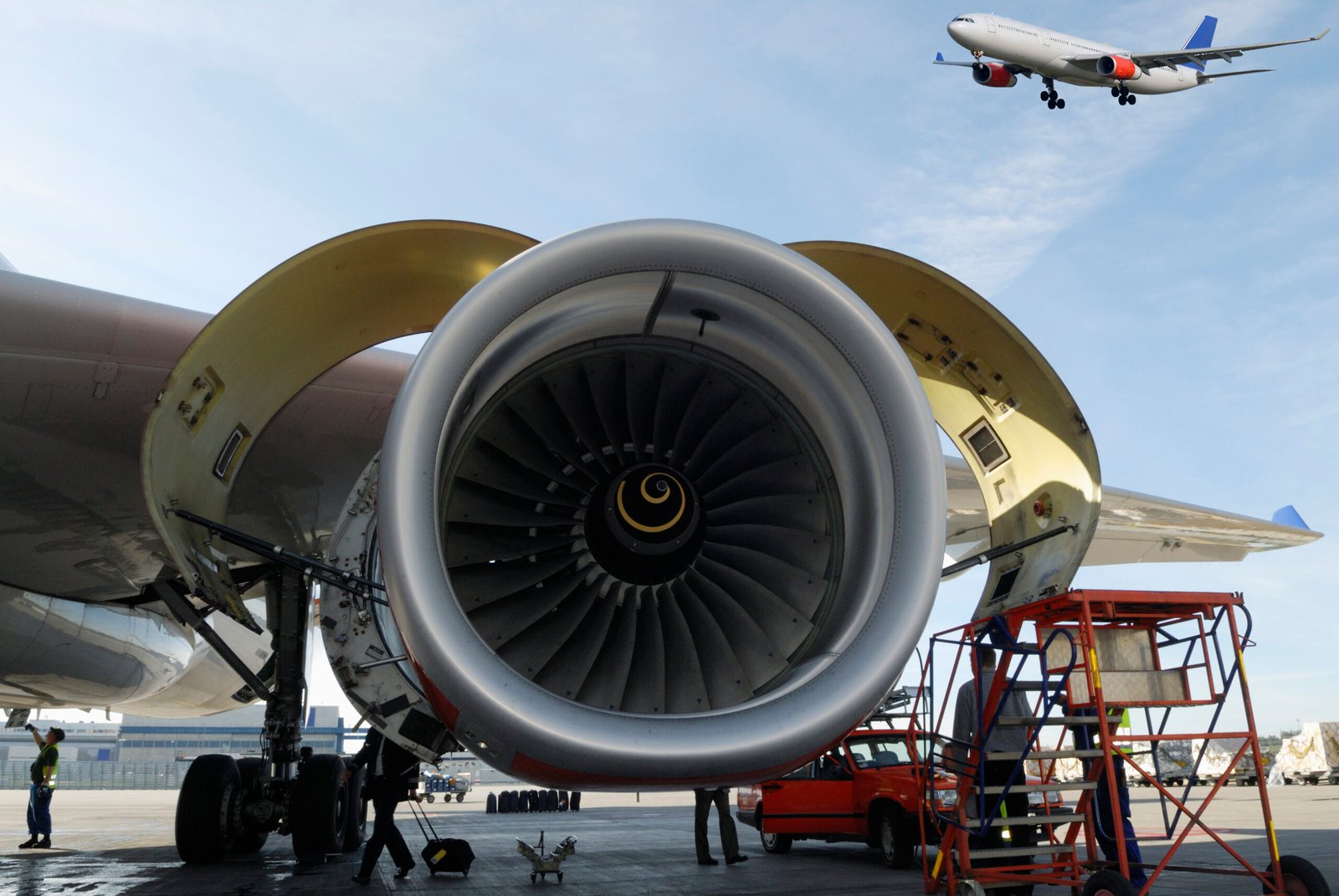Aviation Resources
Navigating the Skies: The Evolution of Commercial Aviation Over the Decades
The world of aviation has undergone a transformative journey, evolving from rudimentary flight attempts to a sophisticated industry that connects millions across the globe. As we soar through this evolution, it’s essential to understand how various educational pathways have developed to prepare future aviators. Today, aspiring pilots and aviation enthusiasts can explore a diverse array of aviation schools offering specialized courses tailored to different ambitions within the field.
Aviation schools come in various forms, catering to distinct interests and career paths. For instance, traditional flight training schools focus primarily on aircraft operation, offering courses such as Private Pilot License (PPL), Instrument Rating (IR), and Commercial Pilot License (CPL). These programs emphasize hands-on flight experience alongside theoretical knowledge. Meanwhile, technical schools provide comprehensive training on aircraft maintenance and engineering, equipping students with skills needed for roles like Airframe and Powerplant Mechanic (A&P).

In addition to these foundational programs, universities have begun integrating aviation into their broader academic offerings. Many now offer degree programs in Aviation Management or Aviation Technology that combine business acumen with practical flying skills. This interdisciplinary approach prepares students for management roles within airlines or airport operations. Moreover, online courses have emerged as a flexible option for those unable to attend traditional classes; they cover topics ranging from air traffic control procedures to advanced navigation systems.
As you embark on your journey in aviation education or simply seek knowledge about this expansive field, numerous blogs and websites can serve as invaluable resources. Websites like AOPA.org (Aircraft Owners and Pilots Association) provide extensive information on pilot training, safety tips, and industry news. Additionally, AVweb.com offers insightful articles on current events affecting the aviation community.
Social media platforms are also rich with content for aviation aficionados. Instagram is packed with stunning visuals from pilots showcasing breathtaking aerial views under hashtags like #pilotlife or #aviationlovers. Twitter serves as an excellent real-time news source where accounts such as @AirwaysNews keep followers updated on industry developments.
For those eager to take their passion further or considering becoming pilots themselves, researching FAA-approved flight schools is crucial. The Federal Aviation Administration maintains strict standards for certification that ensures quality education across its accredited institutions. Schools such as Embry-Riddle Aeronautical University and ATP Flight School are recognized leaders in pilot training programs.

Moreover, technological advancements have revolutionized how aspiring aviators train with simulators playing an essential role in modern instruction. Flight simulators create realistic flying experiences without leaving the ground—ideal for mastering complex maneuvers or navigating adverse weather conditions safely before taking to the skies.
In summary, the evolution of commercial aviation over decades has not only reshaped how we travel but also redefined how we educate future generations of aviators. With countless resources available—from diverse types of courses offered at various institutions to engaging online communities—there’s never been a better time to explore what it means to navigate the vast skies above us! Whether you’re interested in flying high or keeping planes running smoothly on the ground, there’s a path waiting just for you in this exhilarating industry.
From Local Airports to Global Networks: The Evolution of Air Travel
The aviation industry has undergone a remarkable transformation over the past century, evolving from small, local airports serving regional flights to an expansive network connecting people and goods across the globe. This evolution is not just limited to aircraft technology but also encompasses training, resources, and information sharing within the field. As we explore the multifaceted world of aviation today, we’ll delve into various aviation schools offering specialized courses, essential online resources for enthusiasts and professionals alike, as well as FAA-approved flight schools.

### Aviation Schools by Types of Courses
Education in aviation is diverse and tailored to meet the needs of aspiring pilots and other industry professionals. Here are some common types of courses offered at various aviation schools:
1. **Pilot Training Programs**: These programs include Private Pilot License (PPL), Instrument Rating (IR), Commercial Pilot License (CPL), and Airline Transport Pilot License (ATPL). Each course builds upon the last, equipping students with necessary skills for various levels of flying.
2. **Aircraft Maintenance**: For those interested in the technical side, aircraft maintenance programs cover subjects such as airframe systems, powerplant mechanics, and avionics. Graduates often pursue certifications through the FAA.
3. **Aviation Management**: These courses focus on airport operations, airline management, and logistics. They prepare students for administrative roles within airlines or regulatory agencies.
4. **Flight Attendant Training**: Flight attendant programs prepare individuals for a career in cabin crew service with training in safety protocols, customer service skills, and emergency procedures.
5. **Air Traffic Control**: Specialized programs teach future controllers how to manage air traffic flow safely and efficiently while working under pressure.
### Lists of Aviation Blogs, Websites, Social Media Sites
In this digital age, staying informed about industry trends is easier than ever thanks to a plethora of online resources dedicated to aviation:
**Blogs**:
– *AirlineReporter*: Covers airline news from a passenger perspective.
– *Flying Magazine*: Offers insights into pilot experiences and aircraft reviews.
– *AvWeb*: Focuses on general aviation with articles on new technologies and pilot stories.
**Websites**:
– *AOPA.org*: The Aircraft Owners and Pilots Association provides invaluable resources for pilots.
– *FlightAware.com*: Real-time flight tracking information keeps you updated on global flights.
– *SkyVector.com*: An essential resource for navigation charts used by pilots worldwide.
**Social Media**:
– Twitter accounts like @AviationWeek provide breaking news updates.
– Instagram pages featuring stunning aerial photography can inspire future aviators.
– Facebook groups dedicated to specific aircraft or pilot communities foster engagement among enthusiasts.
### FAA Flight Schools/Airplane Schools/Simulators
For those serious about pursuing a career in aviation or simply wanting to take their passion further, enrolling in an FAA-approved flight school is crucial. These institutions ensure compliance with federal regulations while providing high-quality education:
**Local Flight Schools** often operate out of regional airports offering hands-on experience with trained instructors using real aircraft.
**Online Courses & Simulators** have gained popularity as they offer students flexibility alongside interactive learning experiences without leaving home. Many platforms feature advanced flight simulators that replicate real-life flying scenarios—perfecting skills before stepping into an actual cockpit.
In conclusion, the journey from local airports facilitating simple flights to a complex global network showcases how far air travel has come—and continues to evolve! With diverse educational pathways available through reputable aviation schools coupled with countless online resources at our fingertips today’s aspiring aviators are better equipped than ever before to soar high!
Onboard Experience: What It’s Really Like to Fly First Class
When it comes to flying, there’s a world of difference between the cramped quarters of economy class and the plush comforts of first class. But what really sets this elevated experience apart? Beyond the sumptuous seats and gourmet meals, first-class travel embodies an entire ecosystem of aviation excellence that begins long before you step onto the plane.
To understand this, let’s take a peek behind the curtain at the educational landscape shaping future pilots and aviation professionals. Aviation schools come in various forms, each offering unique courses tailored to different career paths. For aspiring pilots, flight training programs are fundamental. These schools provide hands-on instruction in both actual aircraft and simulators, teaching everything from basic maneuvers to advanced navigation techniques. When seeking FAA-approved flight schools, it’s vital to check their accreditation and curriculum offerings; many renowned institutions offer specialized courses like instrument ratings or multi-engine operations.
But it doesn’t stop there! Aviation encompasses a wide range of careers beyond piloting. Many institutions offer programs in aviation management, air traffic control, aerospace engineering, and maintenance technology. Students can immerse themselves in topics such as aviation safety regulations or airline operations, positioning them for diverse roles within the industry.
For those looking for insights beyond formal education, numerous blogs and websites cater to aviation enthusiasts and professionals alike. Sites like **Airliners.net** and **FlightAware** provide real-time data about flights around the globe along with community forums where users share experiences and advice. Social media platforms have also become crucial for networking; Twitter is abuzz with hashtags like #AvGeek or #PilotLife where followers can connect with aviators sharing tales from their personal journeys through the skies.
Next up on our exploration is one of the cornerstones of modern aviation training: simulators. Advanced flight simulators have revolutionized how pilots train today—offering immersive experiences that mimic real-world scenarios without leaving solid ground. These high-fidelity systems allow trainees to practice emergency procedures or complex maneuvers safely while gaining invaluable insights into cockpit dynamics. The benefits don’t just extend to pilot training; they’re also used extensively for cabin crew simulations ensuring everyone knows how to handle unexpected situations onboard.
Now back to that luxurious first-class experience! Let’s paint a picture: upon entering a first-class cabin, passengers are greeted with smiles from attentive staff eager to ensure comfort throughout the journey. Spacious seating allows room for relaxation—or work—complete with adjustable reclining options that transform into fully flat beds when needed. Dining becomes an event rather than just sustenance; expect chef-prepared meals served on fine china alongside premium beverages.

Amenities such as noise-canceling headphones enhance your auditory experience while personalized service means you’ll rarely need anything twice—the crew remembers preferences that make every passenger feel special during their flight.
In conclusion, flying first class isn’t just about enjoying lavish perks; it symbolizes years of hard work by countless individuals trained through diverse educational avenues in aviation schools worldwide. With dedicated resources available online—be it blogs or social media communities—and cutting-edge technology like flight simulators propelling training forward, both aspiring aviators and seasoned travelers can appreciate not only what goes into crafting an exquisite onboard experience but also how interconnected our love for flight truly is!

The History of Aviation: Milestones That Changed the Skies
Aviation is a tale spun from dreams, engineering marvels, and relentless human curiosity. From the first attempts at flight to the modern-day technological advancements that define aviation, each milestone has significantly altered how we traverse our skies. As we delve into this captivating history, it’s essential to consider how technology and training have evolved alongside these breakthroughs.
The journey began in 1903 when the Wright brothers achieved powered flight with their iconic Flyer. This moment opened a gateway to innovation that would only accelerate over the decades. With advancements in materials and aerodynamics came more sophisticated aircraft designs, leading us to the golden age of aviation in the 1920s and 1930s. Fast forward to today, where technology reigns supreme—aircraft are now equipped with state-of-the-art avionics that enhance safety and efficiency.
Training has also transformed dramatically since those early days. Gone are the simplistic methods of yesteryear; contemporary pilot training heavily relies on simulators that replicate real-world flying conditions. These sophisticated systems allow aspiring pilots to hone their skills without leaving solid ground. Simulators provide an immersive experience, enabling trainees to navigate through various scenarios—from routine takeoffs to unforeseen emergencies—without risking lives or aircraft.

In addition to practical training tools like simulators, numerous resources exist online for avian enthusiasts and professionals alike. A myriad of blogs and websites cater specifically to aviation aficionados:
1. **Airliners.net** – A community-driven site filled with photographs and discussions about commercial aviation.
2. **FlightGlobal** – Offers industry news, insights on trends, and reports on aircraft developments.
3. **Pprune.org (Professional Pilots Rumour Network)** – An engaging forum where aviators share experiences and advice.
4. **AOPA (Aircraft Owners and Pilots Association)** – A vital resource for pilots seeking information about regulations, advocacy, and education.
Social media platforms have also become a treasure trove for those passionate about flying. Twitter accounts like @TheFlyingEngineer provide fascinating insights into technical aspects of aviation while Instagram showcases stunning aerial photography through hashtags like #aviationlovers or #pilotlife.
Furthermore, online courses are revolutionizing pilot education by making it accessible regardless of geographical constraints. Ground schools offer comprehensive programs tailored for both novice aviators eager for their Private Pilot License (PPL) as well as seasoned professionals pursuing advanced ratings or endorsements. Websites such as Sporty’s Pilot Shop deliver interactive courses covering everything from basic aerodynamics to advanced navigation techniques.
In today’s rapidly advancing world, drone technology has emerged as another transformative force in aviation history. Initially used primarily for military purposes, drones have found applications across industries—from agriculture monitoring to search-and-rescue missions—and even recreational use among hobbyists! Understanding drone operation is crucial as regulations evolve; resources like FAA.gov provide valuable guidance on certification requirements for drone pilots.
For those contemplating a career in aviation—a field brimming with opportunities—resources abound! Aspiring pilots can explore job boards like Indeed or Glassdoor specifically geared towards aviation careers while networking through platforms such as LinkedIn opens doors within this competitive industry.

The evolution of aviation continues unabated; each advancement builds upon past achievements while propelling us toward new horizons yet unexplored. From cutting-edge simulators aiding future pilots’ training processes to the ever-expanding realm of drones redefining airspace usage—the milestones that shaped our skies are just beginning! Whether you’re an aspiring aviator or merely captivated by flight itself, embracing these developments ensures you remain grounded in this thrilling journey through time aloft.
A Pilot’s Perspective: Adventures in the Skies
As the sun rises and casts a golden hue across the horizon, the thrill of flying beckons. For those of us fortunate enough to don a pilot’s wings, every ascent into the skies is an adventure waiting to unfold. But the journey to become a skilled aviator is paved with rigorous training, innovative technology, and continuous education.
Aviation has evolved dramatically over the past few decades. Today’s pilots are equipped with advanced tools and technologies that were once confined to science fiction. Flight simulators have taken center stage in pilot training, providing an immersive environment where aspiring aviators can hone their skills without leaving the ground. These high-tech devices replicate real-world flying conditions—complete with turbulence, weather changes, and emergency scenarios. Simulators not only save costs but also allow for repeated practice of critical maneuvers until they become second nature.

Alongside simulators, online resources for aviation enthusiasts and professionals abound. Several blogs and websites cater to pilots at all stages of their careers. Some notable mentions include “The Pilot’s Blog,” which shares personal experiences from aviators around the world, and “Flying Magazine,” offering insights into aviation news and trends. Social media platforms like Instagram and Twitter have become bustling hubs for pilots to connect; hashtags such as #PilotLife or #AvGeek draw in thousands sharing breathtaking aerial views or snippets from their cockpit adventures.
For those looking to formalize their aviation knowledge, numerous online courses and ground schools are available today. Organizations such as Gleim Aviation or King Schools provide comprehensive training programs covering everything from private pilot licenses to advanced certifications. The convenience of studying at home while balancing work commitments makes these programs incredibly appealing for aspiring pilots eager to take flight.
But let’s not forget about job opportunities within this dynamic industry! The demand for skilled aviators continues to rise as airlines expand operations globally. Pilots can find positions ranging from commercial airline jobs to corporate flying roles or even cargo transport services. Additionally, niche markets like agricultural aviation or aerial photography provide unique pathways for those looking to carve out a distinctive career in the skies.
We’re also witnessing a revolution courtesy of drones—a game changer in both recreational use and industry applications! From delivering packages to surveying landscapes, drones offer endless possibilities while requiring specific FAA regulations for operation. Pilots who venture into this realm must familiarize themselves with Part 107 rules governing commercial drone usage.
For anyone interested in exploring more about aviation regulations or seeking guidance on becoming a certified pilot, resources from the Federal Aviation Administration (FAA) are invaluable. Their website provides comprehensive information on licensing requirements, safety guidelines, air traffic control procedures, and much more essential data that any aspiring aviator should know.

In conclusion, being a pilot is more than just operating an aircraft; it’s about embracing technology through flight simulations while continuously learning through online courses and connecting with fellow aviation enthusiasts across various platforms. With evolving regulations surrounding drones and consistent demand for qualified professionals in commercial aviation, there’s never been a better time to pursue your passion for flying! So strap in—your adventure awaits high above the clouds!




